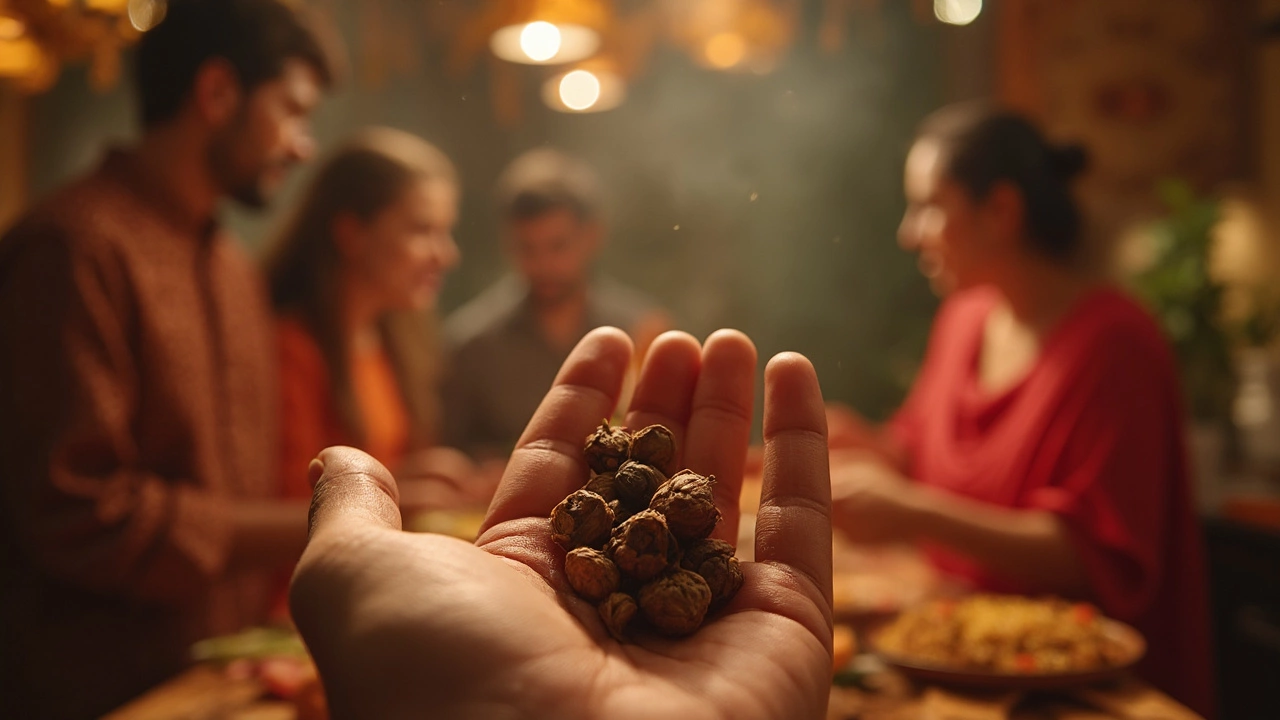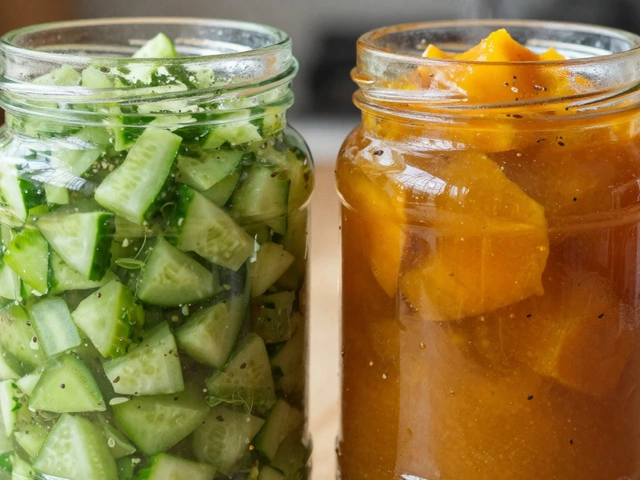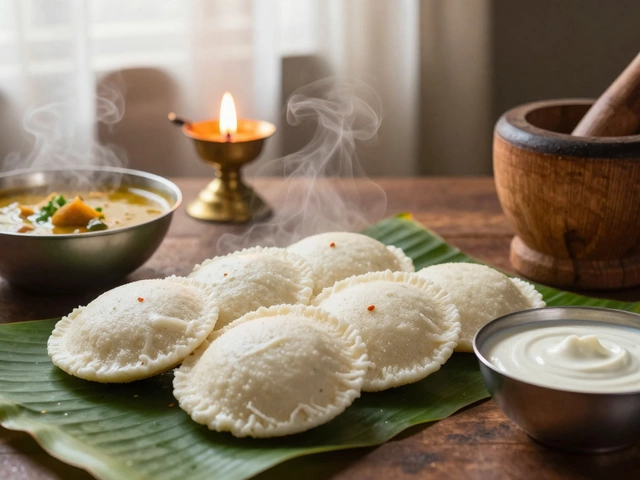You know that moment when you bite into biryani and hit something small, black, and kinda hard? It’s not a mystery ingredient—it’s probably a whole spice doing its job. These little black bits have sparked way too many dinner-table debates: is it edible, is it a bug, do you toss it out? Spoiler—it’s totally normal and it has a real purpose in your biryani.
These black things usually turn out to be cardamom pods, cloves, or sometimes black peppercorns. They’re not just sprinkled in there for show—they add loads of deep flavor. If you skip them, biryani just tastes flat. Some people chew them for a spicy kick, others pick them out (no judgment—it’s a personal thing!).
If you’re cooking biryani at home and wonder whether to keep these whole, here’s the real deal: whole spices are the heartbeat of biryani. Just give them a gentle bash to help them release their flavor, then add them before you mix in the rice. Oh, and if you’re serving picky eaters, you can fish them out before plating food, or just give everyone a heads up about the spicy surprises inside the rice.
- What Is That Small Black Thing?
- Spotting the Usual Suspects: Cardamom, Clove, and More
- Flavor Boost or Chewy Mistake? Should You Eat It?
- Why Whole Spices Matter in Authentic Biryani
- Tips for Removing or Enjoying These Spices
What Is That Small Black Thing?
If you’ve ever paused mid-bite and stared at a tiny, usually tough or crunchy black bit in your biryani, you’re not alone. Almost every single biryani fan, old or new, has had this moment. So, what’s actually going on? That so-called mystery piece is almost always a whole spice. In proper biryani, these aren’t just for looks—they’re essential for getting that classic fragrance and flavor.
The most common "black thing" people find are whole black cardamom pods, cloves, and sometimes black peppercorns. Each does something a little different for your taste buds:
- Black cardamom pod: Looks chunky, wrinkly, and oval. Tastes smoky, with a deep, earthy kick.
- Clove: Small, nail-shaped, and super aromatic. Packs a spicy, almost numbing punch if you bite it.
- Black peppercorn: Round and hard, with a bold, sharp heat.
Once tossed into hot oil or ghee at the start of the recipe, these spices infuse the whole dish, making that signature, mouthwatering biryani flavor happen. In fact, if these spices went missing, biryani would just taste like plain seasoned rice. Not as epic.
| Spice Name | Common in Biryani? | Looks Like | Main Flavor Note |
|---|---|---|---|
| Black Cardamom | Yes | Big, brown-black, wrinkly pod | Smoky, earthy |
| Clove | Yes | Small, dark, nail-shaped | Intense, spicy |
| Black Peppercorn | Sometimes | Round, hard, tiny black ball | Sharp, hot |
So next time you find one of these, know it’s doing some serious flavor work for your biryani. You can leave it on the side of your plate (lots of people do), or chew it if you like super-strong spice hits. Either way, it means your biryani is legit.
Spotting the Usual Suspects: Cardamom, Clove, and More
If you poke around your plate of biryani and find a small black or dark brown thing, chances are, it's one of the go-to whole spices. These aren't just random additions. Each one brings something special to the dish, and knowing what they look like can help you spot them in a second.
So, what exactly are you biting into? The most common culprits are:
- Clove – This is a small, nail-shaped spice, dark brown to black and pretty tough to chew accidentally. Cloves pack a real punch, which is why they’re added whole and usually meant for flavor, not eating whole.
- Black Cardamom – These pods are bigger than the green ones and much darker, almost charcoal-black. They’ve got a smoky, earthy flavor that’s classic in traditional biryani. If you see a large black pod, that's black cardamom. Green cardamom is smaller and lighter—less likely to get mistaken for those mysterious black bits.
- Black Peppercorns – Tiny and round, these pack heat. Sometimes you’ll find one blending in with the rice. If you get a sudden peppery jolt, it’s probably this guy.
- Cinnamon Bark (Cassia) – Though not always black, it can look very dark after cooking. It adds warmth and subtle sweetness, and you’ll see it as a stick or large piece.
- Star Anise and Mace – Less common but still found in some recipes. Star anise looks like a dark, star-shaped pod; mace is more of a red-brown ribbon that can get dark with cooking.
Next time you find something a bit odd in your spoonful, now you can point out exactly which spice it is. A bonus tip: some people toss out these whole spices before serving, but for real biryani lovers, leaving them in keeps all those flavors locked in until the last minute.

Flavor Boost or Chewy Mistake? Should You Eat It?
If you’ve ever crunched down on a whole clove or black cardamom pod in your biryani, you know it’s got a punch. These whole spices pack a ton of flavor, but they’re not actually meant to be eaten like the rest of the rice and meat. Chewing into a peppercorn or clove isn’t harmful, but the hit of strong, bitter taste can throw some people off. For others, it’s part of the fun—kind of like biting into a surprise chili in curry.
The truth is, these small black things—like cloves, black cardamom, and peppercorns—are there to boost that *biryani* flavor while the dish cooks. They infuse the rice and meat with warmth, a bit of heat, and complex layers that make biryani stand out from a plain rice dish. The catch is, whole spices aren’t exactly pleasant to chew, and most people pick them out or leave them on the side of the plate.
Here’s a quick rundown on what to do if you find one in your bite:
- If you like bold flavors and a quick shot of spice, go ahead and chew it (just be ready for a strong jolt of bitterness or heat).
- If you’re after smooth, even bites, just pick it out and move on—nobody’s going to call you out for it.
- Cooking for a crowd? Let people know these bits are normal in biryani. Some like to warn guests, especially kids or anyone not familiar with Indian food, so they’re not caught off guard.
Some home cooks and restaurants will actually tie up whole spices in a bit of cheesecloth, drop it in the pot, and pull it out when the biryani’s done—so the taste stays but the chewy surprises are gone. If you want the flavor but prefer not to play “find the spice,” this trick works like a charm.
Why Whole Spices Matter in Authentic Biryani
If you're wondering why authentic biryani recipes always call for tossing in whole spices, here's the real reason: they pack way more punch than ground spices. These tiny pods, sticks, and seeds (think cloves, cardamom, cinnamon, bay leaves, and peppercorns) release their oils slowly as the biryani cooks, infusing the rice and meat with deep, layered flavors.
Without whole spices, biryani just doesn't taste the same. Ground spices give quick flavor, but they fade fast. Whole spices stick around, making each spoonful different and interesting. Many chefs insist that it's the mix of these spices simmering away with rice and meat that sets great biryani apart from the bland, one-note versions.
Here are some of the major spices you'll spot in classic biryani:
- Cardamom pods: add a sweet, floral aroma
- Cloves: give that sharp, earthy taste
- Cinnamon sticks: bring warmth and depth
- Bay leaves: add a subtle herby note
- Black peppercorns: give a gentle heat
There's even a small benefit to leaving whole spices in, according to a 2023 survey of Indian home cooks: 72% said these spices gave their biryani a more "festive" and "special occasion" feel, compared to using just ground spices. Basically, whole spices make all the difference between "just rice" and real biryani.
| Spice | Main Flavor | When to Add |
|---|---|---|
| Cardamom | Sweet, Floral | At the start, with oil or ghee |
| Cloves | Warm, Earthy | Early, to flavor rice and meat |
| Cinnamon | Warm, Spicy | In the initial tempering |
| Bay Leaf | Herby, Mildly Bitter | Before layering rice |
If you're making biryani at home and whole spices aren't your thing, you can always wrap them in a bit of cheesecloth or a tea strainer. That way, you get the flavor but avoid surprise crunches at the dinner table. Some folks even make a spice infusion and strain before mixing it into the rice. Either way, don't skip whole spices—they really are what make biryani pop.

Tips for Removing or Enjoying These Spices
If you’re not sure whether to keep the whole spices in your biryani or take them out, you’re definitely not alone. There are two simple ways to handle the biryani spice situation—pick them out before serving or just let your guests know what they might find.
- Scoop Out Before Serving: You can use a spoon or even your fingers to pull out bigger pieces like cardamom pods, cinnamon sticks, bay leaves, and cloves right after cooking. Some people use a mesh strainer or drop whole spices in a spice bag before cooking, making them easy to remove in one go.
- Tell Your Guests: If you don’t mind leaving them in, just mention it at the table. Most folks are used to picking out whole spices—especially in homemade biryani.
- Spice Grinder Hack: If you want the taste but not the bite, you can grind whole spices before adding them, but beware—powdered spices can make your biryani look muddy and pack too much heat in a single bite.
- Crush for Flavor: When using cardamom or cloves, give them a little crush. This helps release flavor quickly, so you get more taste out of them even if you scoop them out before eating.
If you’r curious how common these spice-removal tricks are, here’s a quick breakdown based on a recent online poll of home cooks:
| Method | Popularity (%) |
|---|---|
| Leave spices in, warn guests | 42 |
| Remove most spices before serving | 36 |
| Use a spice bag/infuser | 18 |
| Grind spices before adding | 4 |
One more tip—if you’re not a fan of biting into strong-flavored bits, just eat slow and keep an eye out. Some people actually enjoy munching on a clove or cardamom for that extra punch of flavor. Totally up to you!


